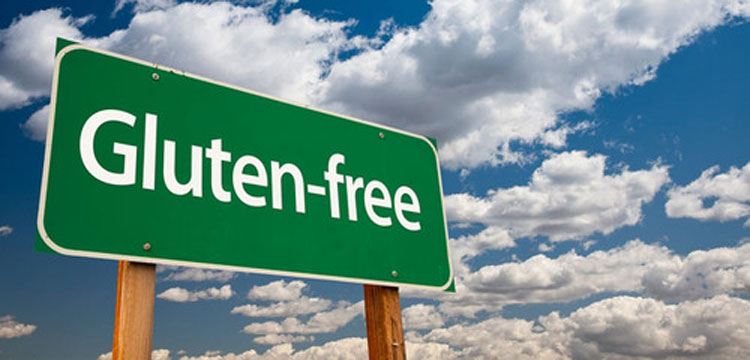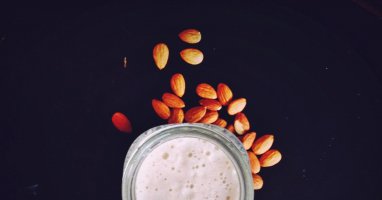Michelle Barkway explains, “For years I was always exhausted and would feel dizzy when I walked more than a few minutes. Then I fainted on the bathroom floor, in front of my four year old. My doctor ended up sending me to a cardiologist because my heart rate was too low. Fortunately there is nothing wrong with my heart; the cardiologist referred me to an Internist who…discovered my blood contained really high levels of the antibodies associated with Celiac Disease. She sent me to an Endocrinologist who did a scope and was able to confirm the diagnosis, even before blood samples were sent to the lab – the damage was severe.”
It seems many people are turning to gluten free diets as it rises in popularity. Gluten free marketing has become highly profitable and it is often hard to miss. It seems gluten free is advertised in almost every grocery store, bakery, and restaurant. But is this the right choice? From an article The Truth About Gluten, “This diet is definitely not for everyone, and there are a ton of nutrients in whole grains which the body needs including various vitamins and minerals.” (P.Jaret; www.webmd.com). It would be wise to do your research before jumping on board.
“My body must have always had an idea that it didn’t want gluten, I never liked bread," says Barkway. "But gluten was still in so many other things I never thought about, like soya sauce, tea, and licorice. The first week was physically the hardest. The day I found out I was a Celiac I went gluten free cold turkey, I was desperate to get healthy. The first three days I was grumpy and angry, my patience was thin and I cried a lot. I would have given anything for a grilled cheese sandwich. None of the gluten free foods tasted right, they all tasted really grainy or chalky. I was also really resentful of people who didn’t have to make these changes, knowing they couldn’t understand the sacrifices I was making to get healthy.”
What makes gluten so deathly? Prescription for Natural Cures reveals these are proteins classified as Prolamins, which in wheat are both Glutenin and Gliadin. Other forms of Prolamins are found in different types of grains; for example, Secalin in rye and Hordein in barley. To generalize and make things simple these proteins are known as gluten. For clarity, “Celiac disease is similar to, but different from gluten sensitivity. This is an autoimmune disease in which the immune system attacks the gluten particles and then cross-reacts with the tissues of the digestive tract. This reaction to gluten damages the finger like projections (villi) of the small intestine that are responsible for the absorption of food and nutrients. This leads to the malabsorption of foods and nutrients.”
After three and a half years on a Gluten Free diet, Barkway feels she has finally come to terms with the changes. “It was really hard to adapt to eating gluten free. You don’t realize how much of our lives, at home or out with friends, centre around food. At home I cook gluten free meals for all of us, but still include non-gluten free foods for the rest of my family. And I bake regular cookies or muffins for them every week. I just have to be careful not to inhale any of the flour, it’s happened and the effects were brutal. Eating at any restaurant is always difficult… you really have to trust the chef and kitchen understand your needs, and that they can make modifications.”
When asked about buying gluten free products Barkway explains, “Most of what we eat now isn’t from the gluten free section of the grocery store. Breads and cookies and crackers that are labelled gluten free have to be considered as treats because they’re so laden with sugar and fat and are nutritionally void of any nutrients. It’s… much more expensive. I feel like these foods do a disservice to people who need to eat gluten free because they’re not usually healthy options. My diet now consists mostly of clean foods like fruits and vegetables, dairy and eggs, some meat, and carbs like rice, potatoes, and quinoa pasta.
When seriously considering this diet, Barkway suggests, "Avoid the gluten free aisle of the grocery store – everything you need is with the ‘regular’ food. Go slow, the cold turkey approach was really hard on my body and me. If I were to do it again I would have eliminated the gluten over the course of a few weeks.”
Symptoms
- Fatigue
- Digestive upset (gas, bloating, diarrhea, constipation, reflux, abdominal pain, nausea)
- Headaches (including migraine, tension, and sinus headaches)
- Hormone imbalance, infertility, irregular periods
- Hair loss
- Bone and muscle pain
- Skin problems, including eczema, psoriasis, and vitiligo
- Poor memory
- Weight loss or weight gain
- Moody problems (anxiety, depression)
- Stunted growth
- Canker sores
- Anemia
- Autoimmune conditions, especially Hashimoto’s thyroiditis
- Seizures
Alternatives
- Amaranth
- Arrowroot
- Buckwheat
- Corn
- Millet
- Potatoes
- Quinoa
- Rice
- Soy
- Teff
Avoid
- Wheat (including wheat flour, wheat germ, wheat bran, cracked wheat, einkorn, emmer wheat)
- Couscous
- Kamut
- Spelt
- Semolina
- Rye
- Triticale
- Barley
- Oats (most oats are often contaminated with wheat, but certified gluten-free varieties are available)
Supplements
- Digestive Enzyme
- Probiotic
- Multivitamin & Mineral Formula
- Vitamin D
- Fish Oil
- Betaine Hydrochloride
- Calcium
Root causes
- Genetics
- Excessive consumption of gluten-containing products
- Leaky gut syndrome and malabsorption (including acid-suppressing medications that result in poor digestion and absorption)
- Fungal infection (often caused by overuse of antibiotics)
- Hybridization of wheat and other grains that create foreign proteins
(Gluten Sensitivity, Prescription for Natural Cures: J.F.Balch M.D, M. Stengler N.M.D., and R.Y. Balch N.D.)
Barkway takes a multivitamin and is careful when getting fiber into her diet; she resorts to vegetables and whole grains, like brown rice. “Most meal recipes can be easily converted to gluten free. Baking without gluten can be really tricky. I was really happy to learn that cup for cup flours that include xanthan gum can be replaced in muffin, cake, and cookie recipes, and the end products taste like ‘regular’ food. I haven’t found much use for gluten free cookbooks, most of them call for multiple starches and flours in each recipe, which can be a pain, especially since a lot of these flours don’t store well for more than a month or two.”
Many people don’t even know they are Celiac or gluten sensitive. If you have concerns get medical tests, or try re-introducing gluten after removing from your diet to find what affect it has on the body. To find out more go to www.glutenfreegirl.com, one of Barkway’s suggested online resources.








